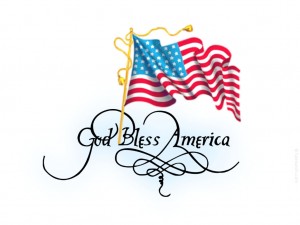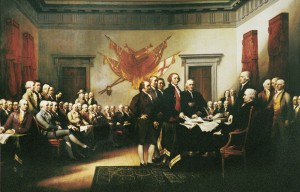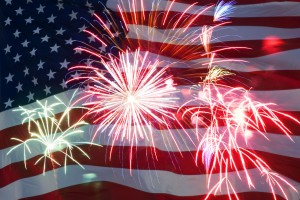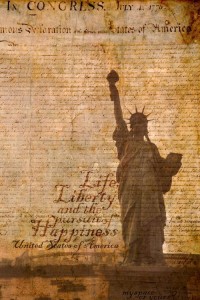What do you know about the Fourth of July?
The Fourth of July is coming quickly upon us. Barbecues are being planned, fireworks are being purchased, and travel coordinating is in the works. It is time to celebrate! But how much do we really know about the holiday we are celebrating? Yes, I am sure we all know we are celebrating the independence, freedom, and birth of our country… but I am sure there is a little more to the story. So with a curious mind, I decided to do some research.
- July 4th was made a federal holiday in 1870 by the U.S. Congress
- July 4th was not a federal paid holiday until the 20th century (some say 1938, others say 1941)
- The tradition of celebrating Independence Day started in the years 1775-1783 with the American Revolution
- The representatives of the 13 colonies started seeking actual resolution of gaining freedom from Great Britain in June of 1776
- The Continental Congress voted on July 2nd. The Declaration of Independence, which was written by Thomas Jefferson, was revised and adopted on July 4th, and signed by 65 men
- The Pennsylvania Evening Post was the first to publish public copies of the Declaration of Indpendence on July 6th, 1776
- John Adams said independence of our country ‘”will be celebrated, by succeeding Generations, as the great anniversary Festival” and that the celebration should include “Pomp and Parade…Games, Sports, Guns, Bells, Bonfires and Illuminations from one End of this Continent to the other.”‘ (history.com)
- The final American victory happened in Yorktown, Massachessetts
- The flag was adopted June 14, 1777
- The Star Spangled Banner was written in 1814 by Francis Scott Key and declared the national anthem in 1931
- John Philip Sousa composed “The Stars and Stripes forever” and is now a marching band staple and has been since July 4, 1897
Little known History Facts:
- Richard Henry Lee of Virginia was a big part of the events leading up to the Declaration
- “John Adams believed that July 2nd was the correct date on which to celebrate the birth of American independence, and would reportedly turn down invitations to appear at July 4th events in protest. Adams and Thomas Jefferson both died on July 4, 1826–the 50th anniversary of the adoption of the Declaration of Independence.” (history.com)
- John Adams and Thomas Jefferson both signed the Declaration, later became presidents, and died on the 50th anniversary
- John Hancock was the first to sign the Declaration of Indpendence, and became famous for his large signature that took up most of the space
- Real independence was not gained until 1783 when the American Revolution officially ended. Great Britain then formally released any ties to the United States with the Treaty of Paris
- There have been 28 versions of the flag
- In 1854, the words Under God were added to the pledge of allegiance
- Benjamin Franklin proposed the turkey as the national bird but was overruled by John Adams and Thomas Jefferson, who wanted the bald eagle
- The mascot Uncle Sam began in 1812 with Samuel Wilson, a meat packer. He provided meat to the army, which were stamped with U.S. Since the meat came from a man named Samuel, they started calling him Unlce Sam to go along with the U.S. package stamp
- Some started celebrating the holiday by holding a mock funeral for the King of Great Britain
- The Independence of the United States was first celebrated by public readings of the Declaration of Independence, concerts, bonfires, cannon fired, and parades
- In the 1890’s the two major political parties, Federalists and Democratic-Republicans would hold two separate celebrations for Independence day
- Fireworks have been used to celebrate even before the Revolution
- There are 30 towns nationawide with Liberty in their names, 11 with Independence
- Patriotism comes from the latin word Patria, which means homeland
- Old Glory: name given in 1831 to mean spirit of liberty and human freedom
- Flag colors: white- purity and hope, red- valour and zeal, blue- loyalty, perseverance, justice, and vigilance
- Star: number of current states
- Stripes: original 13 colonies
“May it be to the world, what I believe it will be … the signal of arousing men to burst the chains … and to assume the blessings and security of self-government. That form, which we have substituted, restores the free right to the unbounded exercise of reason and freedom of opinion. All eyes are opened, or opening, to the rights of man. … For ourselves, let the annual return of this day forever refresh our recollections of these rights, and an undiminished devotion to them.” (Thomas Jefferson, pbs.org)
Do you try to find ways to honor the actual meaning of the 4th of July holiday?
“We hold these truths to be self-evident, that all men are created equal, that they are endowed by their Creator with certain unalienable Rights, that among these are Life, Liberty and the pursuit of Happiness.”
-The Declaration of Independence 4 of July, 1776.
Have you read the Declaration of Independence recently? Give it a read: http://www.archives.gov/exhibits/charters/declaration.html
More historical documents: http://www.usa.gov/Topics/Reference-Shelf/Documents.shtml
Information from: History.com, livscience.com, pbs.org, usa.gov, cleveland.com, purpletrail.com





Its actually a nice and helpful piece of information. Im glad that you shared this useful information with us. Please keep us up to date like this. Thanks for sharing. bbfdceccbfgffcfb